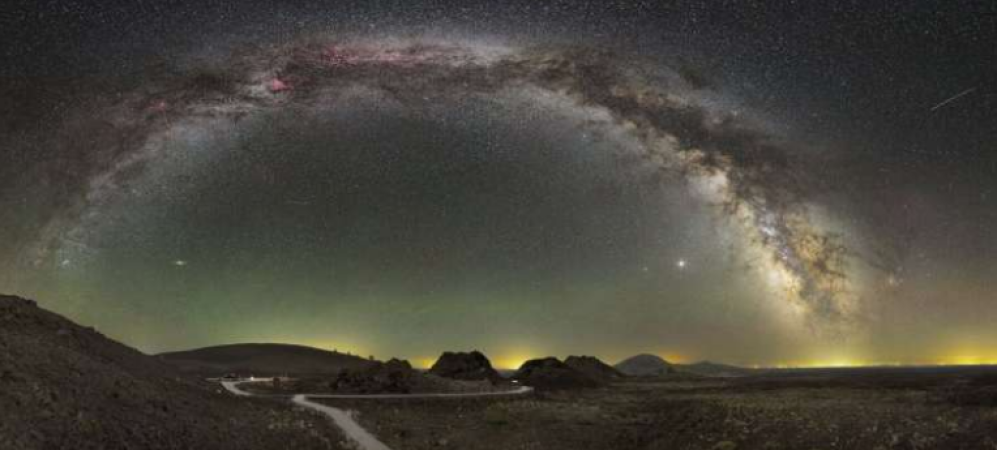For several years, the commercial space industry has been actively discussing the potential of satellite “super constellations” orbiting Earth. These large groups of satellites are envisioned to deliver various services, including communications, navigation, and broadband internet access.
At the same time, advancements in small satellite technology (such as CubeSats) and the expansion of rideshare launch programs have significantly lowered the barrier to space, enabling easier access for universities, research institutions, and other organizations. As the number of operational satellites continues to grow, concerns are mounting over the potential implications for both space debris and the field of astronomy.
One particular area of concern is radio astronomy, which depends on detecting extremely faint signals emitted by astronomical bodies. The growing population of satellites could interfere with these sensitive observations. This issue is the subject of a recent study published on the arXiv preprint server by a team of international researchers, who examined the effects of satellite megaconstellations on radio astronomical observations.
Although some researchers advocate establishing radio telescopes on the Moon’s far side—where terrestrial interference is blocked—a better understanding is needed of how satellite transmissions impact radio astronomy. This knowledge is vital to ensure continued access to so-called “dark” and “quiet skies” that are essential for accurate observations.
The research was spearheaded by Mike Peel, a postdoctoral researcher with the Blackett Laboratory at Imperial College London and co-lead of Sathub, which operates under the International Astronomical Union’s Centre for the Protection of the Dark and Quiet Sky from Satellite Constellation Interference (CPS). Peel collaborated with fellow scientists from Imperial College London, the University of Illinois at Urbana-Champaign, the University of Washington, and the Square Kilometer Array Observatory (SKA). The team’s paper was presented at the 9th European Conference on Space Debris and is available on the conference’s official website.
To explain the situation further, radio astronomy employs a variety of antennas and receivers to observe the sky across different resolutions and frequencies. These tools allow scientists to explore what is known as the “hidden universe,” where clouds of interstellar dust obscure visible light but not radio waves. Because of the need to avoid interference, observatories are typically situated in remote areas to reduce the risk of radio frequency interference (RFI) and maximize the signal-to-noise ratio (SNR).
Examples of such observatories include the Very Large Array (VLA) in New Mexico’s desert, the SKA facilities in South Africa’s Karoo desert and Australia’s Murchison region, and the Atacama Large Millimeter/submillimeter Array (ALMA) in Chile’s Atacama Desert. Furthermore, the International Telecommunication Union (ITU) reserves limited sections of the radio frequency spectrum for specific scientific uses involving physical processes and spectral lines.
In an email interview with Universe Today, Peel elaborated: “Some countries enforce ‘radio quiet zones’ through legislation around radio observatories to reduce terrestrial transmissions. However, satellite constellations are a global issue—there is no location on Earth where one can entirely escape their presence.
"Although certain satellite companies do enter agreements to avoid transmitting over designated quiet zones, such instances are relatively rare. That’s why it’s important to study both intentional and unintended satellite emissions and their effects on radio telescopes.”
Traditionally, satellites have confined their signals to X, Ku, and K bands in the 10 to 20 GHz range. But as low Earth orbit (LEO) satellites multiply and operators seek to expand services, more diverse portions of the spectrum are expected to be used. While the Moon’s far side remains a promising site for future radio astronomy observatories, it must also be shielded from satellite emissions to remain effective.
Therefore, a thorough understanding of satellite constellations’ radio frequency (RF) characteristics is essential to maintaining the functionality of both terrestrial and lunar-based radio observatories.
However, this is no simple task, as Peel noted, because most information about satellites and their transmitters is considered proprietary. “We are aware of the main frequency bands that satellites use and the maximum allowable transmission power within those bands—which can be extremely high, enough for satellites to appear brighter than the sun at those frequencies.
“But we lack details about out-of-band transmissions. These include potential signal leakage just outside officially allocated bands or unintentional emissions from onboard electronics, which can be picked up by radio telescopes at lower frequencies, even from distances as far as 400 kilometers.”
An added complication is that the publicly listed positions of satellites often have minor inaccuracies—errors of even a few arcminutes can affect radio observations significantly. Some radio telescopes already avoid scanning sections of the sky that intersect with predicted satellite paths, but this avoidance strategy becomes increasingly difficult as satellite numbers grow.
“There are currently more than one million satellites proposed to the ITU, although not all of them will actually be launched,” Peel remarked. “Nonetheless, we anticipate that between 50,000 and 200,000 satellites may enter orbit in the foreseeable future.”
Fortunately, organizations like the IAU CPS, the Committee on Radio Astronomy Frequencies (CRAF), and similar groups worldwide are actively researching satellite interference with radio astronomy. Several scientific conferences have also convened to tackle the issue, including the SATCON 1 and SATCON 2 workshops and the Dark and Quiet Skies I and II conferences. A separate investigation by the IAU CPS has focused on unintended transmissions beyond officially sanctioned frequencies.
In that study, researchers employed the Low Frequency Array (LOFAR) telescope to examine 68 Starlink satellites for signs of unintentional electromagnetic emissions. They discovered that the satellites emitted radiation in the 110 to 188 MHz range, well below their intended downlink frequencies of 10.7 to 12.7 GHz.
Peel added that this recent research illustrates how satellites can be observed across many parts of the electromagnetic spectrum. “In radio frequencies, they are particularly intense where they are meant to transmit, and these bands are expanding into higher frequencies. Every new satellite network seeks access to unique frequency ranges and additional bandwidth.
“The broader the spectrum use, the more radio astronomical work becomes compromised. Even in frequency bands where no intentional transmission occurs, low-frequency emissions are still detected due to the background hum generated by onboard electronics.”
Unfortunately, there are no flawless mitigation methods currently available, and it is entirely unrealistic to require satellites to stay below the horizon from a radio telescope’s point of view. However, the worst impacts can be reduced through cooperation among satellite operators, facilitated by organizations such as the IAU CPS, the ITU, and the Committee on the Peaceful Uses of Outer Space (COPUOS), which operates under the United Nations Office for Outer Space Affairs (UNOOSA). Efforts to implement feasible mitigation strategies are ongoing.
Peel noted, “Some satellite operators are working on data-sharing initiatives, including boresight avoidance—where they learn the direction a radio telescope is aimed and temporarily disable transmissions when passing through that zone.
“Others avoid targeting observatories altogether, and some nations are drafting regulations requiring satellite operators to consult with national research entities to reduce their impact. To curb low-frequency emissions, better shielding and ground testing of satellites are also under consideration.”

